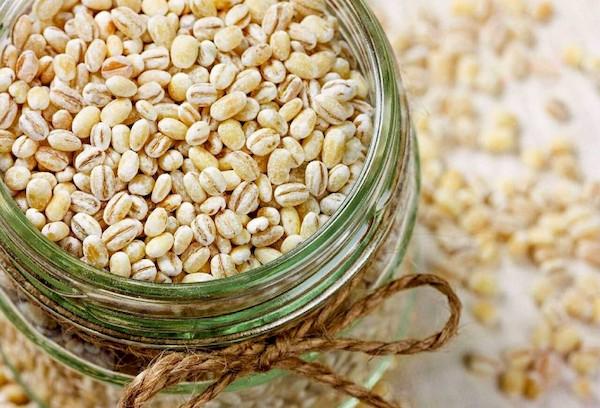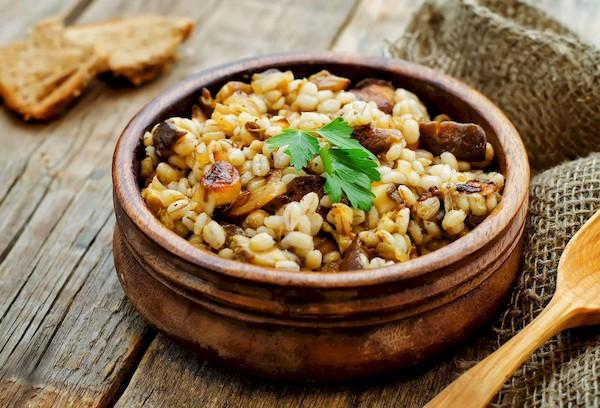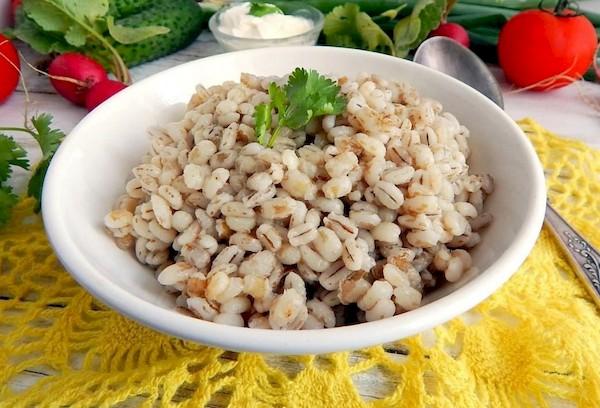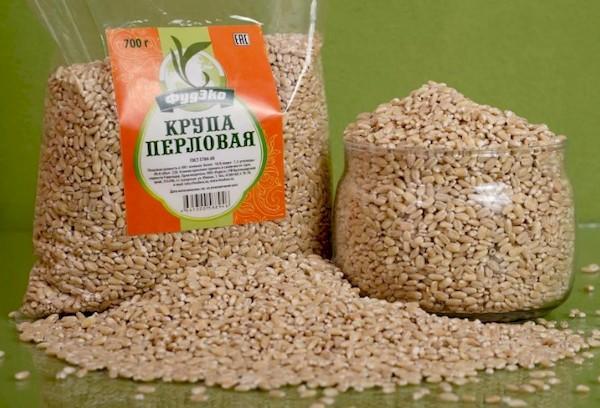Barley, Pearl barley - what is it, what grain is it made from
Pearl barley is a type of barley cereal. The name of the culture comes from the English word “pearl” - “pearl”. Pearl barley grains really resemble small pearls.
What is pearl barley made from?
Pearl barley is made from barley. This is not the only way to use such raw materials - barley groats, for example, are made from it. Pearl barley is distinguished by a large amount of processing.

To begin with, barley is completely cleared of natural films. Then the grits are sanded and polished until completely smooth and slightly shiny. This is what gives it its resemblance to pearls, for which it got its name. What distinguishes pearl barley from other cereals is its shape – round, neat and soft.
A Brief History of Pearl Barley
The first countries to introduce pearl barley into their diet were Africa, Syria, Palestine and Tibet. Scientists also managed to prove that it was this grain that was the basis of the gladiators’ diet, so the dish can be considered quite ancient. However, it spread throughout Europe much later - only in the Middle Ages.
It is not known for certain where exactly the plant came from to Russia, but it began to be cultivated, for the most part, in the Far East. Porridge made from such cereals became Peter the Great’s favorite food, even though in those days the dish took a very long time to prepare – in a Russian wood-burning oven the process took 6 hours. The emperor liked to season such porridge with butter, sprinkle with poppy seeds and add honey.
Pearl barley became most widespread only in 1930, during the times of the USSR. It was during this period that cereal made up the majority of public catering, because it was inexpensive, satisfying, healthy and stored well. Despite the rapid rise in popularity, the cereal was soon forgotten - people fell in love with buckwheat much more.
However, in Europe, cereals remain popular to this day. A special dish called orzotto is prepared from it - an analogue of risotto, differing only in that it uses pearl barley instead of rice. The dish turns out to be tender, tasty, aromatic and can be combined with any additional ingredients, which is why its popularity has not waned for many years.
What is contained in 100 grams of pearl barley
100 g of pearl barley contains:
- 1.16 g fat.
- 9.91 g protein.
- 77.72 g carbohydrates.
- 10.09 g water.
- 1.11 g ash.
The energy value of this amount of cereal is 352 kcal. The culture is also extremely rich in vitamins and minerals - exact data can be seen in the table below.
| Vitamins, minerals | Contents per 100 g (µg) | Percent Daily Value (%) |
| Vitamin A | 1 | 0,1 |
| Beta carotene | 13 | 0,3 |
| Vitamin K | 2,2 | 1,8 |
| Vitamin B1 | 20 | 15,9 |
| Vitamin B2 | 10 | 8,8 |
| Vitamin B3 | 46 | 28,8 |
| Vitamin B4 | 378 | 7,6 |
| Vitamin B5 | 3 | 5,6 |
| Vitamin B6 | 3 | 20 |
| Vitamin B9 | 23 | 5,8 |
| Calcium | 290 | 2,9 |
| Iron | 25 | 25 |
| Magnesium | 790 | 19,8 |
| Phosphorus | 2210 | 31,6 |
| Potassium | 2800 | 6 |
| Sodium | 90 | 0,7 |
| Zinc | 21 | 19,4 |
| Copper | 4 | 46,7 |
| Manganese | 13 | 57,5 |
| Selenium | 377 | 68,5 |
It is thanks to such a high content of nutrients that many nutritionists recommend introducing pearl barley into your diet.
Kinds
In addition to the classic pearl barley, which is most often used in everyday life for preparing porridges and soups, there is also a subtype of cereal - Dutch. This is an even more processed version of pearl barley, which is distinguished by its ideal spherical shape and light shade.It is less healthy, but more applicable in gastronomy, since it cooks much faster and has a more tender consistency.
How to cook pearl barley correctly
The exact method of preparing cereals can be chosen based on what kind of dish you plan to prepare. However, very similar methods are often used for soups, cereals and side dishes. Since pearl barley requires lengthy processing, preparation is a very important step, which should be given time in advance.
If you plan to cook in the morning or afternoon, it is better to soak the cereal in water in the evening - this way it will retain more nutrients and at the same time cook faster. Before starting cooking, you need to thoroughly rinse the pearl barley until the flowing water becomes clear. Only after this can the cereal be added to the soup or poured with plenty of water and put on fire.
Lifehack! If you are preparing porridge, you can use milk instead of water - this will give you a more delicate taste.
It is important to take into account that it takes a lot of time to prepare pearl barley - at least an hour and a half. Therefore, if you add it to soup, calculate the cooking time for the remaining ingredients. Choosing the right dishes is also important - it is better that the pan has a thick bottom, otherwise the cereal may burn.
Another problem that you may encounter when preparing side dishes or porridges from barley is that such dishes cannot be stored ready-made at all. Immediately after cooling, the cereal becomes extremely tough and loses most of its taste, so it is better to eat it immediately after cooking. But there is no such problem with soups - in broth, pearl barley retains its properties for a long time.
What is prepared from pearl barley - 10 popular dishes
Due to its numerous beneficial properties, cereals have always been actively used in cooking. You can find a wide variety of recipes based on barley - from classic porridges and soups, to hot dishes and even bread. Some of the recipes have been around for a very long time in history, while others were invented more recently.
Here are 10 options for a wide variety of dishes that can be prepared from pearl barley:
- Rassolnik is a classic soup with pickles and a spicy taste.
- Pearl barley bread is a healthy substitute for baked goods made with white flour.
- Peppers stuffed with pearl barley and mushrooms are a vegetarian replacement for the standard dish with minced meat and rice.
- Pearl barley risotto with green vegetables - prepared like a standard risotto, only with pearl barley, and supplemented with broccoli and green peas.
- Pearl barley porridge is a classic way to use cereal; it can be cooked in a regular saucepan or pot.
- Barley with fried vegetables and tahini sauce - traditionally this Asian dish is positioned as an appetizer, but it can also be used as a side dish. Vegetables that are great include bell peppers, onions, fennel and celery.
- Canned food for the winter - most often pearl barley is used to make pickle preparations, which can then be cooked throughout the year.
- Barley salad with beets, radishes and burata cheese - however, all components of the salad, except the grain itself, can be changed at your own discretion.
- Turkey with pearl barley and vegetables is a basic hot dish that is especially suitable for those who follow a healthy diet.
- Perlotto with porcini mushrooms – pearl barley in white wine will be especially tender and aromatic, and porcini mushrooms will be an ideal flavor complement.However, if these are not available, you can replace them with champignons or oyster mushrooms.
Cereals can be used to prepare a wide variety of dishes, the main thing is to be creative and remain open to experimentation.
How to choose quality pearl barley in a store
Different companies offer different quality products. Pearl barley also has its own gradation - the level that will be assigned to a specific bag of cereal depends on the size and shape of the grains. The first level cereal will consist of large, shiny, oblong-shaped fractions. The fifth - the last stage - involves very small balls.
In addition, the type of packaging also plays an important role, since it is it that ensures the safety of the product. Most often there are two options:
- Plastic bags. This is not the best packaging option, since during storage the cereal releases moisture, which accumulates in a sealed bag and creates a favorable environment for the development of pathogenic bacteria. At best, pearl barley will simply go rancid, and at worst, it may be useless.
- Cardboard box. The best option for storing pearl barley. Cardboard is a natural material that allows moisture to gradually evaporate from the inside, which means that the above problems do not arise.
Lifehack! If you want to buy pearl barley in cellophane packaging, carefully inspect it from all sides. If droplets of water or traces of moisture are visible anywhere, you should not take such a pack.
You can also pay attention to the color - a good product can have different shades from white to yellow. A greenish tint, despite its unusual appearance, is a variation of the norm, but a brown or even darker color should definitely alert you when purchasing.





